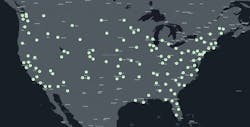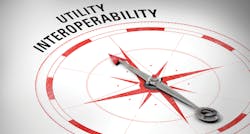In an emergency or during general operations, the ability to share data seamlessly across utility systems can provide better situational awareness to act quickly. Covering a densely populated territory of almost 1 million customers, the Transformation and Customer Experience team at Seattle City Light (City Light) has seen the future firsthand. It is interoperability.
In collaboration with many in the industry, City Light is in the midst of a profound transformation, wherein interoperability is the only path that can unlock the value of utility investments in smart grid, smart metering and smart cities.
How It Began
For more than a decade, City Light has helped to shape an industry-wide message: the only way to unlock the value of ongoing investments in grid technologies is to require the seamless interoperability of those investments. In alignment with this belief in interoperability, City Light became the first Green Button Initiative (Get My Data)-certified utility in the U.S. in 2014. This made it one of the first utilities in the world to embrace and promote the value of standardization. These efforts around interoperability would further reduce the burden of integrating new technologies, drive spectacular efficiencies in data presentation, and provide a conduit to maximize future smart grid and smart city investments, such as advanced metering infrastructure (AMI).
Also in 2014, the White House Office of Science and Technology Policy (OSTP) created a new challenge, one to improve emergency response. This challenge was for electric utilities and software providers to find an approach to share outage data safely and securely, one that fostered power restoration and data availability during grid events. The White House’s message was simple: “Embrace standardization and best practices in data sharing to empower consumers, first responders, surrounding utilities and governmental bodies with information during power outages.” This challenge resonated with City Light’s Transformation and Customer Experience team.
The team’s vision and industry-wide collaboration efforts were detailed in the January 2016 issue of T&D World. The article (http://bit.ly/2KOoBoR) provided a framework for initiating the conversation on how to share data and to get others involved. It detailed answers to the these questions:
- What is the Outage Data Initiative (ODI)? A common information model (CIM)-based solution and process to leverage the Application Programming Interfaces (APIs) to benefit utilities, customers, first responders and government with the sharing of outage data.
- Where is the call to action? The collaboration of the Electric Power Research Institute (EPRI) and City Light invited a dozen utilities — including Commonwealth Edison Co., Baltimore Gas and Electric Co., Iberdrola S.A., Duke Energy Corp., Florida Power & Light Co., National Grid plc, Pacific Gas and Electric Co., San Diego Gas & Electric Co., Emera Maine, Hart EMC and Southern California Edison — as well as software developers — DataCapable Inc., Oracle Corp., Siemens AG, iFactor (since acquired by KUBRA), Esri, EPRI, OMNETRIC and Accenture plc — to get involved in the initiative.
- Is there value in collaboration? Presenting at DistribuTECH 2016, the collaboration showcased the interoperability of outage data across utilities and vendors where, for the first time ever, outages were consolidated from multiple utilities in a standardized way and the outage data was coordinated between all utility information channels.
Playbook of Goals
The early momentum of the ODI and success of the DistribuTECH 2016 demo showcase led City Light’s Transformation and Customer Experience team to create a detailed playbook of goals to drive further adoption in the state of Washington:
- Real-world validation on the value of the standard — This included a requirement to engage more utilities. To achieve this goal, a localized vision was developed whereby utilities in Washington were asked to join.
- Proof interoperability is easy — Clear documentation from utilities and supporting vendors was provided on how long it took to adopt the standard.
- More vendors and utilities adopting the standard — A multiyear effort was kicked off to engage the entire vendor and utility community to drive adoption.
- Future proof and value exploration — New ways were explored to integrate standardized outage data with existing and ongoing investments in grid technologies.
The Power of Team
Less than two years after ideation with the OSTP, the Electrotechnical Commission (IEC) ratified the new CIM-based standard. This approval provided the much needed momentum for the ODI collaboration. IEC’s emphasis was on the value of messaging, and the continued support and industry-wide affirmation on the value of the standard was provided by City Light. The utility detailed how the standard was being used to drive its new customer-facing outage map as well as integration with smart metering data and the ability to share this information with city police, fire, and emergency medical services. The Transformation and Customer Experience team also supported integration of this data with Washington’s State Energy Office and the state emergency operations center (EOC).
To create an industry adoption and rollout plan, federal support and alignment would be needed to gain agreement for the visualization and analysis of large scale outages. Oak Ridge National Laboratory (ORNL), supported and funded by the Department of Energy’s Office of Electricity, initiated a regional pilot of the outage data initiative within Washington state.
Under the leadership of Supriya Chinthavali, open-data evangelist and computer scientist at ORNL, the team developed a vision whereby other utilities in Washington state would adopt the standard to support data sharing through the state’s emergency services. This role included managing the software development teams adopting the standard as well as the EPRI team involved in building the test harness. In this role, ORNL provided a common point of engagement to support the dialogue with other utilities in Washington.
In charge of standard management and testing development, the teams at EPRI hosted multiple webinars with their geographic information system (GIS) interest group as well as multiple presentations at annual forums like DistribuTECH and Esri’s utility-focused GeoConX conference. Under the leadership of Gerald Gray and Daniel Lowe at EPRI, modifications on what data fields were required in the standard was completed in addition to the development of test cases. Further augmented by vendor involvement, utility OMS and GIS vendors implemented the ratified standard in their core products and pledged support and adoption of the standard in their next production release.
All this would be for nothing without support for emergency managers. In the rollout plan, the connection of standardized outage data with emergency officials necessitated enlisting the help of Everbridge. The team at Everbridge supported the integration of this data set into the situational awareness viewer used by Washington’s state energy office. This has resulted in significant third-party involvement as other industries and vendors stopped passively watching the standard and have become actively involved. This has included leaders from within the cable and telecommunications industries, two crucial additions with an enormous amount of infrastructure and technical capacity — ergo the ability to share outage information in near-real time with other critical infrastructure industries.
Interoperability
By embracing a well-defined rollout strategy, the growing team supporting ODI was able to meet and exceed its playbook goals. Adoption of the standard requires minimal resources from the utility, and implementation similarly requires little effort from the outage management system vendor.
A clear, repeatable process has emerged with a proven strategy for success. For a utility to get involved, it only requires enlisting a team member who is knowledgeable of the existing outage data workflows and location of this data set at the utility. This team member can follow the standard, documenting the scant time needed to get the data into the standard. And, it works! Recently, Mason Public Utility District (PUD), OPALCO and Clallam County PUD followed this workflow guide and was able to convert and integrate its existing outage data set in under eight hours.
As more vendors implement the standard, each document their processes and the amount of time spent involved to include the ODI standard natively within their product. Nearly every outage management system vendor in the market has either explored or is in the process of adopting the standard. By involving the core utility systems providers (smart metering, customer engagement, GIS and outage management) in the adoption of the standard, utilities across the U.S. can benefit immediately by having the standard available in the core product by upgrading to the latest version, which includes the sharing capability via ODI.
In 2019, National Information Solutions Cooperative (NISC) will become the first official implementer of the ratified standard in its core product. The full adoption of this standard by NISC ensures its entire client base will benefit from the value of data and the ability to share standardized outage data with other utilities, state agencies and vendors, thanks to interoperability.
Customer Needs Driven
City Light is committed to providing the best customer experience for each one of its customer-owners. The utility’s initial involvement in the ODI standard was focused on the safety of customers, businesses and employees at City Light. Focusing on the customer helps to address the real need to eliminate communication gaps between employees and public safety officials tasked with supporting residents during major events.
As the growing value of the ODI standard has emerged, the team at City Light has shifted its focus from development of the standard to integration of this information more thoroughly into existing processes, systems and emergency-response workflows. This includes how the data can be leveraged with smart metering data to provide new and exciting ways to map and visualize outage events.
City Light’s next focus is to analyze the data with community officials and expand access to additional community partners. The utility aims to determine how the data can help first responders and emergency operations center staff to operate in their shared territories. This is just the beginning of identifying and using outage information to support business partners and community engagement. Seattle City Light constantly is looking for new partners to expand the reach and response of the ODI standard.
City Light, ORNL, EPRI, NISC and countless vendors have proven standardized outage data can redefine how information is shared and how the response can be coordinated. The entire collaboration encourages more involvement from all.
Acknowledgement
City Light could not have become the leader in adopting and implementing standardized and certified programs and initiatives in the electric power industry without the transformational leadership of Kelly Enright. The authors also wish to thank DataCapable for its ongoing support and role in the development of this article. The authors also thank Esri for its role in spatial capabilities as well as ORNL, the DOE Office of Electricity and all the utilities that have implemented the standard. Finally, thanks to NISC for its ongoing commitment.
For more information:
EPRI | www.epri.com
Everbridge | www.everbridge.com
Green Button | www.greenbuttondata.org
Mason PUD | www.masonpud.org
NISC | www.nisc.coop
OSTP | www.whitehouse.gov/ostp
Seattle City Light | www.seattle.gov/light
This manuscript has been authored by UT-Battelle, LLC under Contract No. DE-AC05-00OR22725 with the U.S. Department of Energy. The United States Government retains and the publisher, by accepting the article for publication, acknowledges that the United States Government retains a non-exclusive, paid-up, irrevocable, world-wide license to publish or reproduce the published form of this manuscript, or allow others to do so, for United States Government purposes. The Department of Energy will provide public access to these results of federally sponsored research in accordance with the DOE Public Access Plan (http://energy.gov/downloads/doe-public-access-plan).






